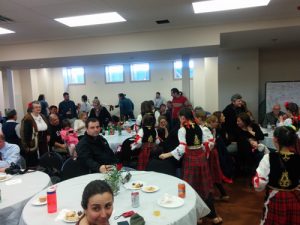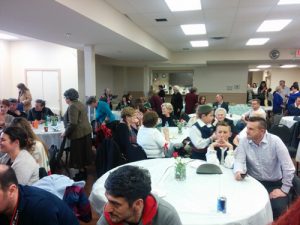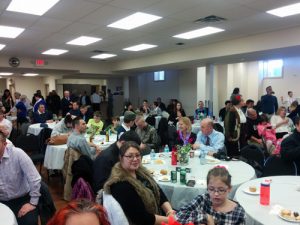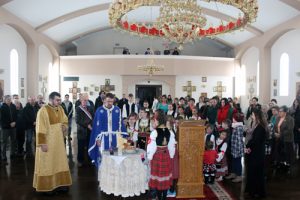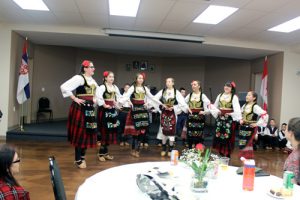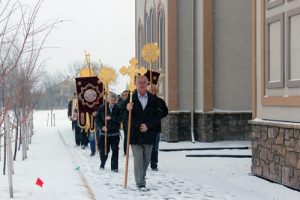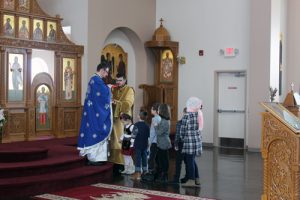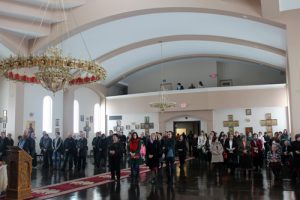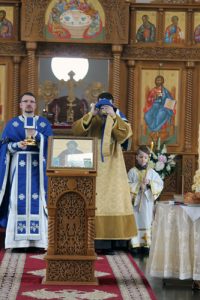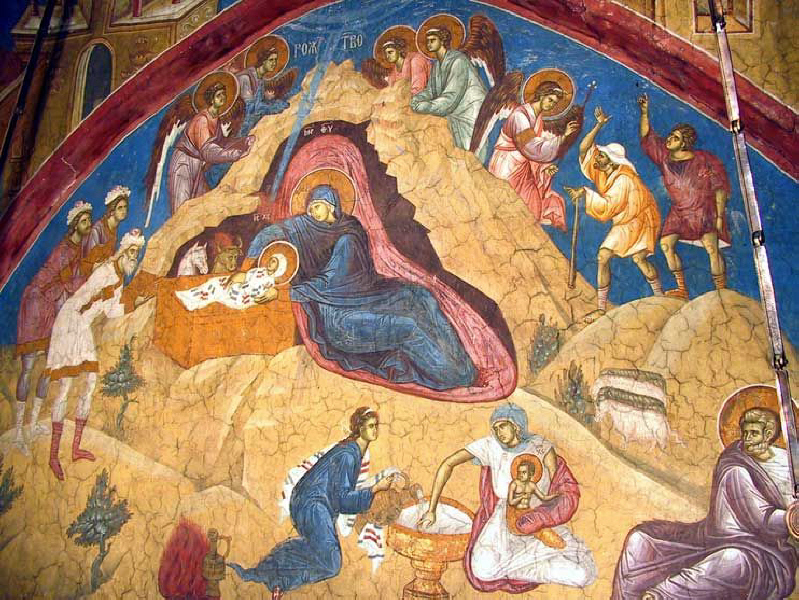Saint Basil of Ostrog Procession in Niksic
In the evening of the day when St. Basil of Ostrog is celebrated every year a procession goes through Niksic, a town which is close to the Ostrog monastery. Special attention deserves that the population of Niksic is around 60 thousand people and almost the whole city participates in the procession. In the short video below are included views from above the procession on 13th March, 2024.
The Three Births of Christ

St. Nikodemos the Hagiorite says that Christ in His human nature had three births: the first from the Virgin Mary, the second by baptism, and the third by resurrection. With reference to these three births, He was called the first-born because, in the first, He is first-born among many brothers; in the second, He was called first-born of the new creation; and in the third, first born of the dead. If we are attentive, we will discover that forty days after these births, after each of these three happenings of the Lord, there followed an important event. Forty days after His birth, He was brought to the Temple and we have the Feast of the Presentation. Forty days after His baptism in the Jordan River, He conquered the devil in those three temptations in the desert. And forty days after His resurrection, He ascended into heaven and offered to His Father the first-fruits of our own nature.
Metropolitan Hierotheos of Nafpaktos
Matushka, the Light of the Risen Christ is seen only from the Cross
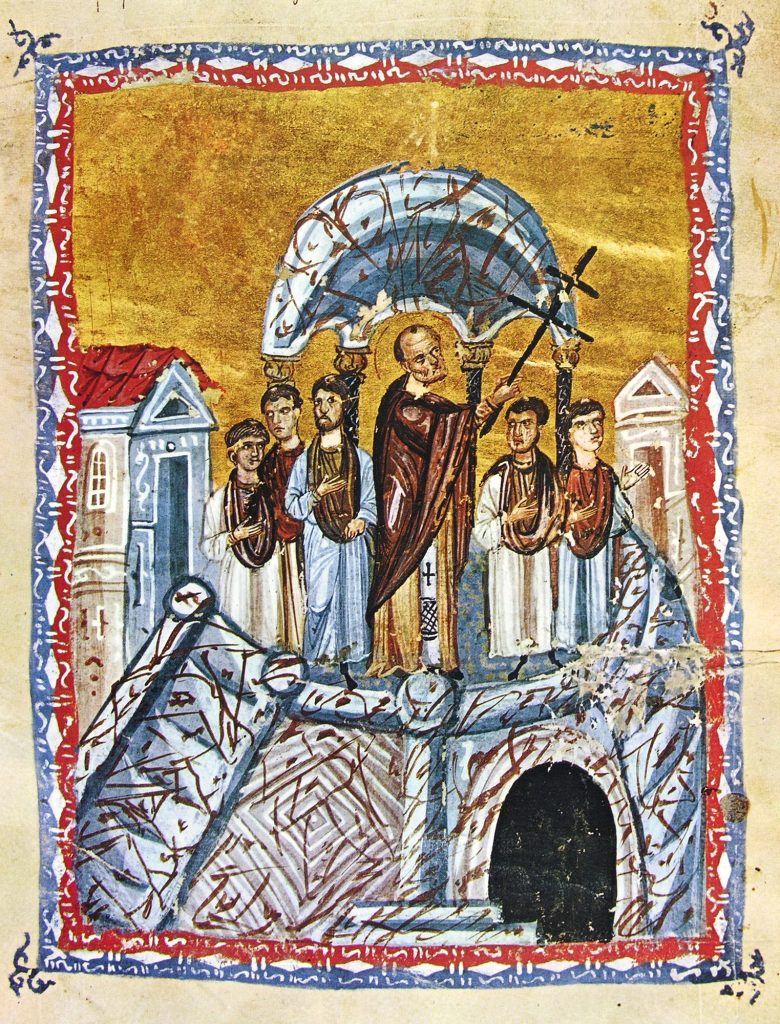
Before the church at the Holy Resurrection-Novodevichy Monastery was returned, we would go see Fr. Nikolai Guryanov on the island of Talabsk. The monastery churches were still in a state of desecration, and there were even latrines there, and some machine tools were installed. We would sometimes take pictures of this disgrace to show Batiushka.
One day he said: “What a beautiful monastery! It’s your monastery! Matushka, stand by it.” And he began to sing the hymn: “Before Thy Cross, we bow down in worship, O Master, and Thy holy Resurrection we glorify.”
We thought then: Here’s the Elder praying to the Cross of Christ, and the monastery is on its own Golgotha, ruined… Could such fulfilled hope really have quietly made its way into him in some miraculous manner? When would we glorify the Resurrection? It is the Monastery of the Resurrection…
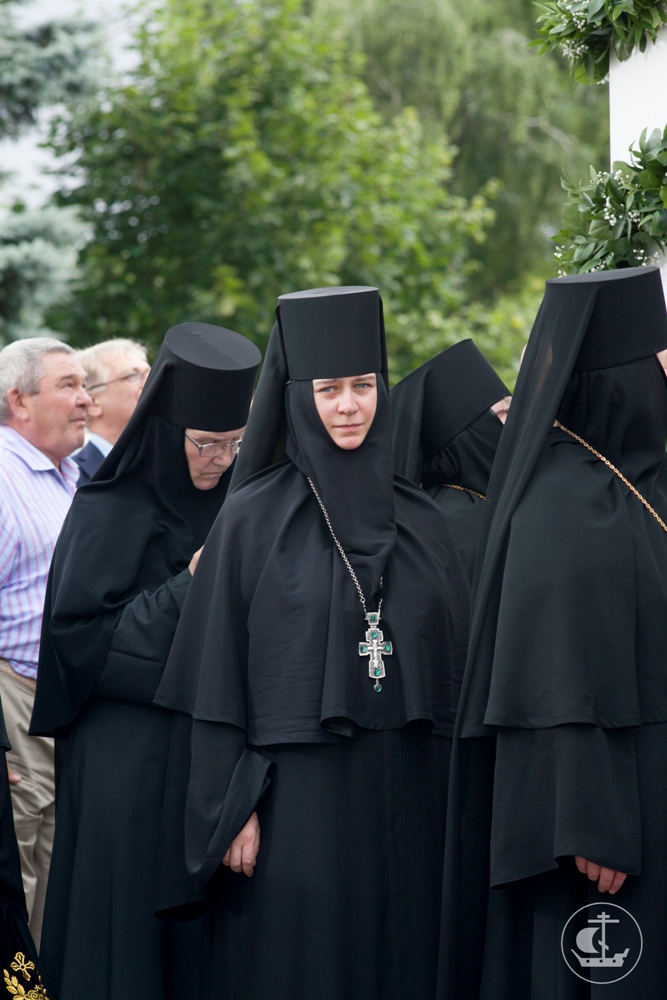
But this is why Batiushka was clairvoyant. His hymn to the Cross, from out of the blue, was in fact a foretelling of the time when the monastery would be returned to the Church, because the official date of the monastery’s transfer occurred in the week of the Elevation of the Cross, when the Cross of the Lord lies on the analogion in the center of the church. Then, in the presence of our ruling hierarch Metropolitan Vladimir (Kotlyarov) of St. Petersburg and Ladoga, before the Cross of Christ, the glorification of the Cross was celebrated and the documents on the transfer of the monastery were handed over.
Fr. Nikolai had always rejoiced in every little stroke, in the details that testified to the approach of this hour, when the monastery would be returned to the Church. Any information about living Russian monasteries was gratifying for him in general. Batiushka would pray for the benefactors and the monastics. The ideal of holiness is indestructible in the heart of the Russian people, in the Russian soul. Many remember the scene from the film when they ask Fr. Nikolai: “How can we revive Holy Rus’?” to which he smiled in his usual manner and answered: “It hasn’t died!” God isn’t in the logs, but in the ribs.[5]

I know that when someone has a special spiritual battle, about which path to take, God Himself advises the weakest about which way leads to salvation. I remember when in the most crucial period of my life, another, then-unknown-to-me elder appeared to me in a dream. Only later did I realize who it was by the portrait hanging at the St. Petersburg Theological Academy where I teach! I suddenly stopped on the image of Metropolitan Anthony (Melnikov; † 5/29/1986) and I realized it was precisely this spirit-bearing archpastor that appeared to me… He had already reposed by then. I already knew that he had not been tonsured into the schema during his lifetime, although he came to me in the schema. “Upon meeting with Christ, the schema will be removed from one person and laid upon another,” says St. Paisios the Athonite. We don’t know who will stand before the Lord in what rank. The great schema is with God—the schema of the spirit that a man acquired during his life.
And here the schema-metropolitan spoke with me, strengthening me in choosing the monastic path. I agreed. And then, suddenly, I was given Vladyka Anthony’s paramon[6] with the inscription: For I bear in my body the marks of the Lord Jesus. I was tonsured with this paramon. Such a blessing was given to me at my tonsure from that world where everyone is alive to God (cf. Mt. 22:32).
Later, when the monastery had been returned to the Church and its monastic life began to warm up, it was very hard for me to bear the cross of the abbacy for a while: My passions still arose and it was hard to endure the infirmities of others… Then I wrote a letter to Fr. John (Krestiankin). I cried it all out, and the answer just wasn’t coming. “There was nothing to send in the mail,” I thought. “Batiushka probably has no time…” I had begun to despair when suddenly news came from him! I opened the envelope and there was a photo of a rock on which was depicted St. Seraphim of Sarov praying with upraised arms—we know that the arms of the ascetics are not uplifted as being elevated to Heaven, but on the contrary, they’re being spread on the crossbeam of the Cross, accepting all the pain and confusion of this world… I turned the picture over, and there on the other side was written in Batiushka John’s hand: “Matushka, the Light of the Risen Christ is seen only from the Cross.”
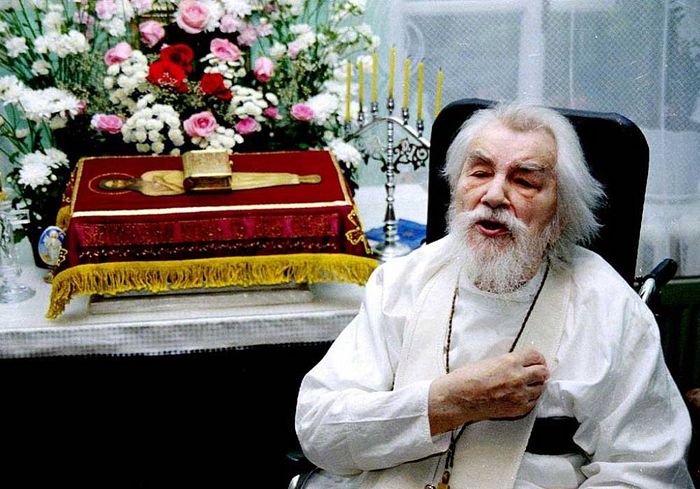
Then, once again was revealed the prophecy of Fr. Nikolai. Thus we glorify the Resurrection of Christ in Holy Resurrection Monastery. Glory to God for all things.
Abbess Sophia (Silina) of Holy Resurrection-Novodevichy Monastery in St. Petersburg
--------------
[5] Meaning God isn’t confined to church buildings, but also resides in man, as, according to St. Paul, our bodies are the temple of the Holy Spirit.—Trans.
[6] A piece of square cloth worn on the back, embroidered with the instruments of the Passion, and connected by ties to a wooden cross worn over the heart, representing the yoke of Christ.—Trans.
In order to experience Christ’s Ascension
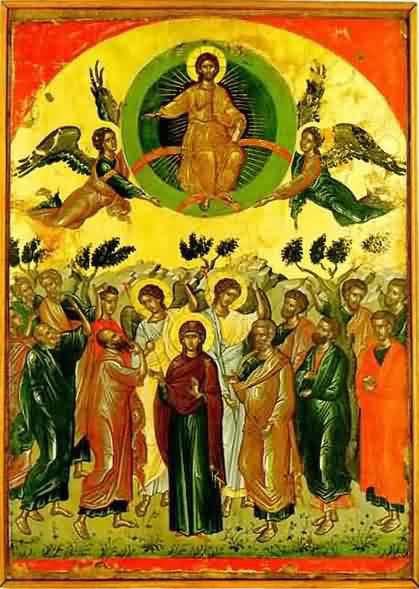
Blessed feast of the Ascension of Christ!
In order to experience Christ’s Ascension and comprehend its mystery as far as possible, we must keep the life-giving commandments, acquire the deifying virtues, especially humility and love, so that we can endure every tribulation and temptation which comes by reason of our being Christians, but even to have the desire for martyrdom for the glory of Christ’s name.
St. Nicodemus of the Holy Mountain
Source: Holy Monastery of Virgin Mary the Consolatory, Quebec
Thousands celebrate feast of St. Basil of Ostrog in the pouring rain
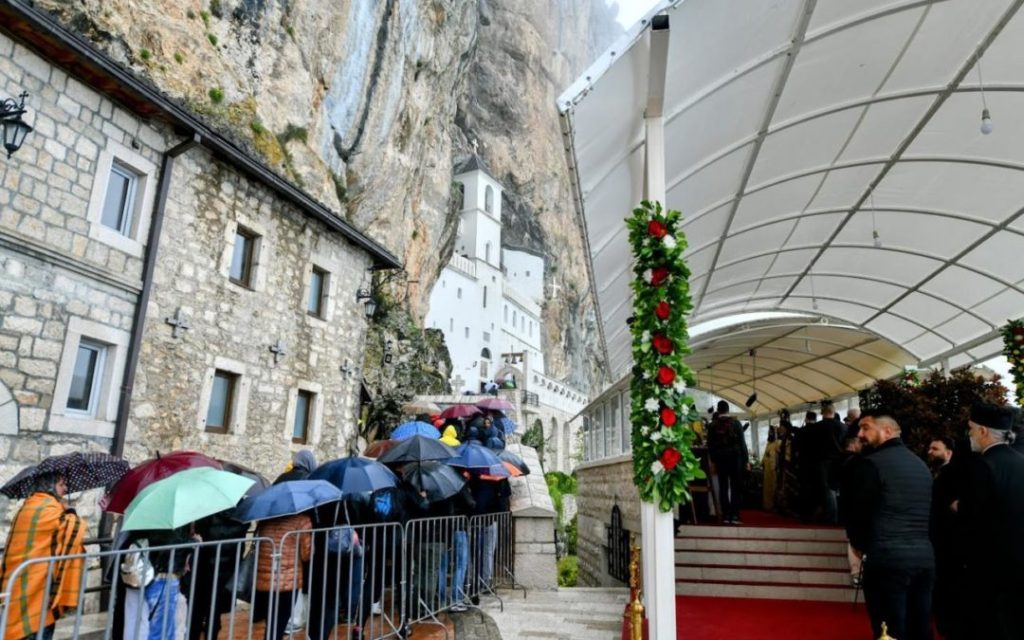
Thousands of faithful Orthodox Christians braved inclement weather this morning to celebrate the feast of St. Basil of Ostrog, one of the most beloved saints of the Serbian Orthodox Church.
Every year, Orthodox Christians from Montenegro, Serbia, Bosnia and Herzegovina, and beyond go on pilgrimage to Ostrog Monastery in central Montenegro, where the relics of St. Basil lie in repose.
The celebration began last night with the Vigil celebrated by visiting hierarch His Grace Bishop Irinej of Eastern America. Also in attendance were His Eminence Metropolitan Joanikije of Montenegro, His Grace Bishop Sergij of Biha? and Petrovo, and His Grace Bishop Kirilo of Buenos Aires and South and Central America, reports the Metropolis of Montenegro.
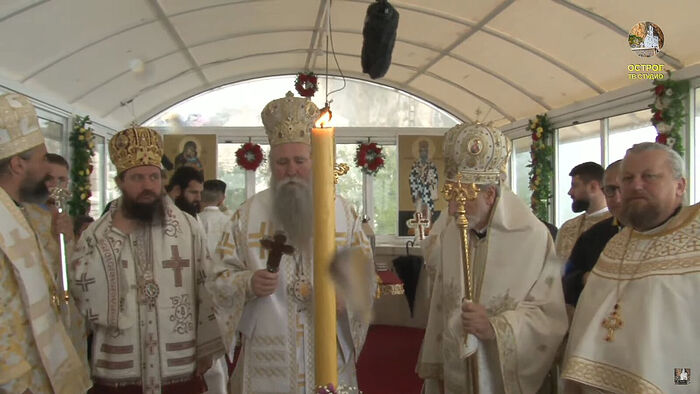
The service was attended by thousands of believers, despite the weather. Met. Joanikije heartily thanked all those who came, saying: “I don't remember that there was ever a storm like this, but it’s also a gift from God. This shows real, true faith and love… This is where we see the character of our people, because it’s not like anyone could teach children in school to make such a sacrifice. This is something they inherited from their ancient and recent ancestors.”
The hierarch also spoke about how St. Basil has healed many, including those who were written off by doctors who said they were beyond hope.
And this morning, the aforementioned hierarchs celebrated the Divine Liturgy in honor of St. Basil. As can be seen in the video below, the faithful again braved pouring rain:
***
St. Nikolai Velimirovic writes about St. Basil in his Prologue from Ochrid:
Saint Basil was born in Popovo Polje, a village in Hercegovina, of simple and God-fearing parents. From his youth he was filled with love for the Church of God and when he reached maturity he entered the monastery of the Dormition of the Most Holy Theotokos in Trebinje and there received the monastic tonsure. As a monk he quickly became renowned because of his genuine and infrequently-found ascetic life. Saint Basil took upon himself mortification upon mortification, each one heavier and more difficult than the last. Later, against his will he was elected and consecrated as bishop of Zahumlje and Skenderija. As a hierarch he first lived in the monastery of Tvrdosh and from there, as a good shepherd, he strengthened his flock in the Orthodox Faith, protecting them from the cruelty of the Turks and the cunning ways of Latins. When Basil was exceedingly pressed by his enemies and Tvrdosh destroyed by the Turks, he moved to Ostrog, where he lived an austere ascetic life, protecting his flock by his ceaseless and fervent prayer. He fell asleep peacefully in Lord in the sixteenth century, leaving behind his incorrupt Relics, incorrupt and miracle-working to the present day. The miracles at the grave of Saint Basil are without number. Christians and Muslims alike come before his Relics and find healing for their gravest illnesses and afflictions. A great people’s assembly (sabor) occurs there annually on the Feast of Pentecost.
Source: Orthodox Christianity
The Annunciation
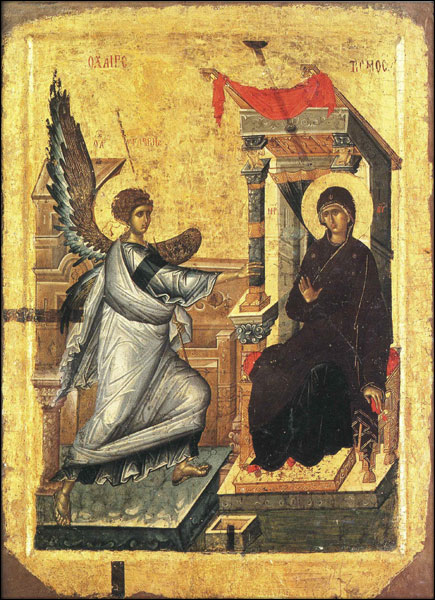
When the All-Holy Virgin completed the fourteenth year after her birth and was entering her fifteenth year, after having spent eleven years of living and serving in the Temple of Jerusalem, the priests informed her that, according to the Law, she could not remain in the Temple but was required to be betrothed and enter into marriage. What a great surprise to the priests was the answer of the All-Holy Virgin that she had dedicated her life to God and that she desired to remain a Virgin until death, not wanting to enter into marriage with anyone! Then, according to Divine Providence, Zacharias, the high priest and father of the Forerunner, under the inspiration of God, and in agreement with the other priests, gathered twelve unwed men from the Tribe of David to betroth the Virgin Mary to one of them to preserve her virginity and to care for her. She was betrothed to Joseph of Nazareth who was her kinsman. In the house of Joseph, the All-Holy Virgin continued to live as she did in the Temple of Solomon, occupying her time in the reading of Sacred Scripture, in prayer, in Godly-thoughts, in fasting and in handiwork.
She rarely went anywhere outside the house nor was she interested in worldly things and events. She spoke very little to anyone, if at all, and never without special need. More frequently she communicated with both of Joseph's daughters. When the fullness of time had come, as prophesied by Daniel the Prophet, and when God was pleased to fulfill His promise to the banished Adam and to the Prophets, the great Archangel Gabriel appeared in the chamber of the All-Holy Virgin and, as some priestly writers wrote, precisely at that same moment when she held open the book of the Prophet Isaiah and was contemplating his great prophecy: "Behold, the virgin shall be with child, and bear a son!" (Isaiah 7:13). Gabriel appeared in all of his angelic brightness and saluted her: "Rejoice, highly favored one! The Lord is with you" (St. Luke 1:28), and the rest in order as it is written in the Gospel of the saintly Luke. With this angelic annunciation and the descent of the Holy Spirit upon the Virgin, the salvation of mankind and restoration of all creation began. The history of the New Testament was opened by the words of the Archangel Gabriel: "Rejoice, highly favored one" This is to imply that the New Testament was to signify joy to mankind and to all created things. It is from this that the Annunciation is considered not only a great feast, but a joyful feast as well.
(Source: Prolog of Ohrid)
The Meeting of our Lord in the Temple
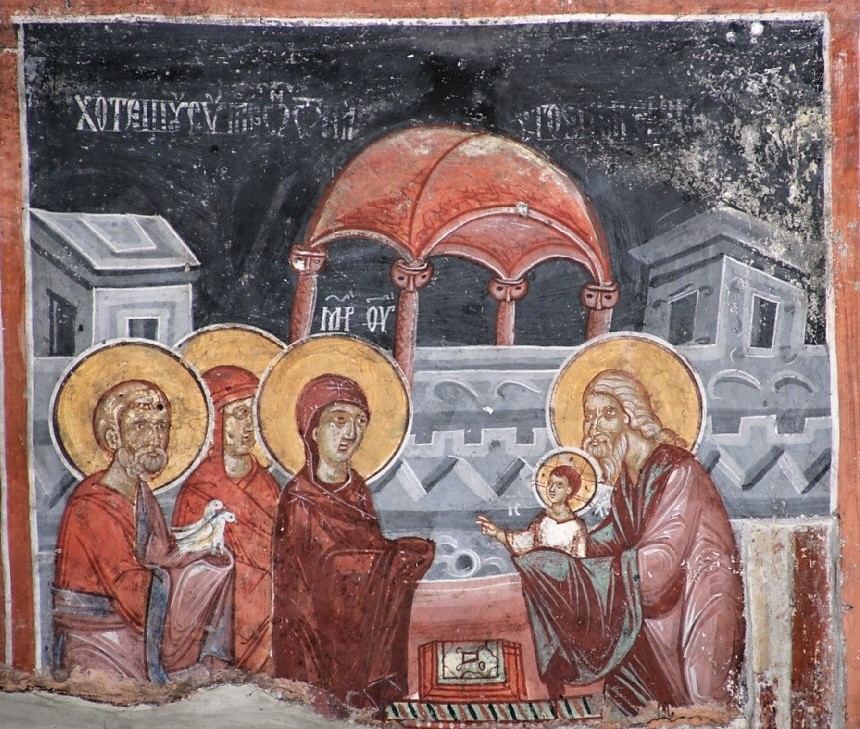
Speaking about the spread and celebration of Christmas, St. John Chrysostom says: "Magnificent and noble trees when planted in the ground shortly attain great heights and become heavily laden with fruit; so it is with this day." So it is with the day of the Meeting of our Lord in the Temple. In the beginning this day was discussed among Christians but the solemn celebration began from the period of the great Emperor Justinian. During the reign of this emperor, a great pestilence afflicted the people in Constantinople and vicinity so that about five-thousand or more people died daily. At the same time a terrible earthquake occurred in Antioch. Seeing the weakness of man's ability to prevent these misfortunes the emperor, in consultation with the patriarch, ordered a period of fast and prayer throughout the entire empire. And, on the day of the Meeting [The Presentation] itself, arranged great processions throughout the towns and villages that the Lord might show compassion on His people. And truly, the Lord did show compassion; for the epidemic and earthquake ceased at once. This occurred in the year 544 A.D. Following this and from that time one, the Feast of the Presentation [Meeting] began to be celebrated as a major feast of the Lord. The tree, in time, grew and began to bring forth-abundant fruit.
Prologue of Ohrid, 2 February
Saint Sava, Archbishop of the Serbs
Sava was born in 1169 A.D. He was the son of Stephen [Stefan] Nemanja the Grand Zupan of the Serbs. As a young man, Sava yearned for the spiritual life for which he fled to the Holy Mountain [Mt. Athos] where he was tonsured a monk and with rare zeal lived according to the ascetical rule. Stefan Nemanja followed the example of his son and came to the Holy Mountain where he was tonsured a monk and died as Simeon, the monk.
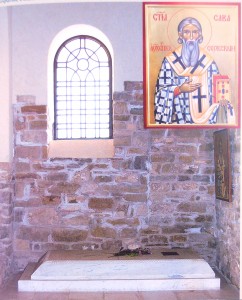 Sava obtained the independence of the Serbian Church from the [Byzantine] emperor and patriarch and became the first Archbishop of the Serbs. Together with his father, he built the Monastery Hilendar and, after that, many other monasteries, churches and schools throughout the Serbian lands. On two occasions, he made a pilgrimage to the sacred places in the Holy Land. He restored peace between his two brothers who were estranged because of a struggle for power. He restored peace between the Serbs and their neighbors.
Sava obtained the independence of the Serbian Church from the [Byzantine] emperor and patriarch and became the first Archbishop of the Serbs. Together with his father, he built the Monastery Hilendar and, after that, many other monasteries, churches and schools throughout the Serbian lands. On two occasions, he made a pilgrimage to the sacred places in the Holy Land. He restored peace between his two brothers who were estranged because of a struggle for power. He restored peace between the Serbs and their neighbors.
In establishing the Serbian Church, he was, through that, establishing the Serbian State and culture. He instilled peace between all the Balkan peoples and worked for the benefit of all for which he was loved and respected by all the Balkan peoples. To the Serbian people he gave a Christian soul which did not perish with the collapse of the Serbian State.
Sava died in Trnovo, Bulgaria, during the reign of Emperor Asen, having become ill following the Divine Liturgy on the Feast of the Epiphany on January 12, 1236 A.D. King Vladislav translated his body to the Mileshevo Monastery from which Sinan Pasha removed it and burned it on Vracar in Belgrade, April 27, 1595 A.D.
Homily about the visions of the invisible world
"We look not to what is seen but to what is unseen"(2 Corinthians 4:18).
We see this material and transient world, but we look to that spiritual and immortal world.
We see earthly joy, often interrupted by tears and sighs and, in the end, always concluded in death; but we look to spiritual joy among the angels and saints of God in the heavens, to joy uninterrupted and eternal.
We see sufferings and failures of the righteous in this life; but we look at their glory and celebration in that world.
We see many successes, glory and honor of the unrighteous in this life, but we see their defeat, condemnation and indescribable torment in eternity.
We see the Church of God often humiliated and persecuted in this world, but we look to the final victory of the Church over all of her enemies and adversaries both visible and invisible.
Brethren, we often see tyrants and abductors as rulers and wealthy men in this age, and we see saints as poor, dejected and forgotten, but we look at the other kingdom, the Kingdom of God, eternal, sinless and immortal in which the saints will reign without one, no, not one tyrant or abductor.
O Lord, most patient and most merciful, open our spiritual vision that we may see that which awaits us after this short-lived life and that we endeavor to fulfill Your law.
To You be glory and thanks always. Amen.
Prologue from Ohrid by Saint Nikolai Velimirovic
About Holy Water
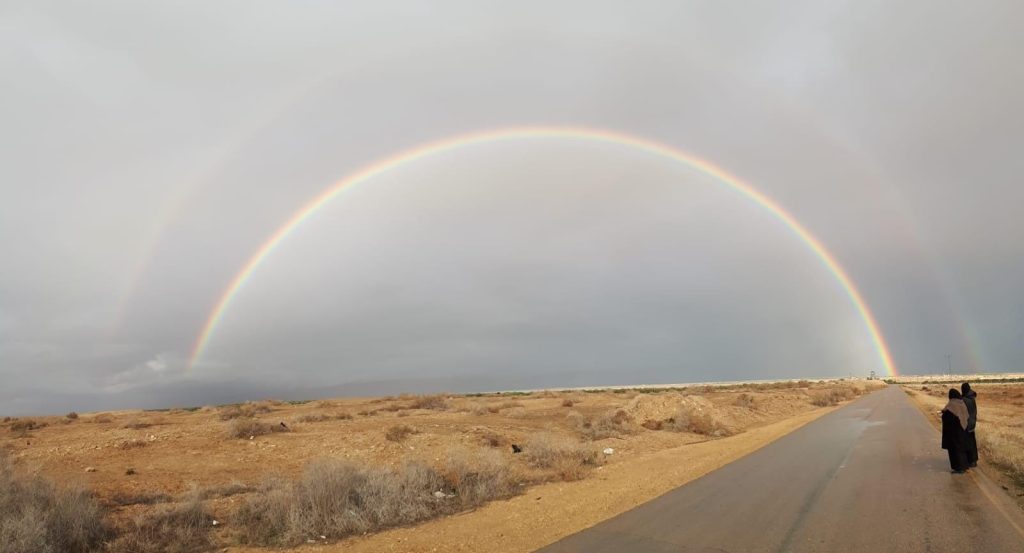
On Theophany, that is, the Day of the Lord's Baptism, every year a great miracle is performed. The Holy Spirit, coming down upon the water, changes its natural properties. It becomes incorrupt, that is it does not spoil, remains transparent and fresh for many years, receives the grace to heal illnesses, to drive away demons and every evil power, to preserve people and their dwellings from every danger, to sanctify various objects whether for church or home use. Therefore Orthodox Christians with reverence drink Holy Water - a great Agiasma (holy thing), as the Greeks call it.
One should always have at home enough Theophany water so that it will last the whole year, and make use of it at every need; in cases of illness, leaving on a journey, whenever one is upset, students when going to examinations. They do well who daily, before eating any kind of food, drink a little Holy Water. It strengthens the powers of our soul - if it is done, of course, with prayer and reverence, and one does not merely expect from it a mechanical result.
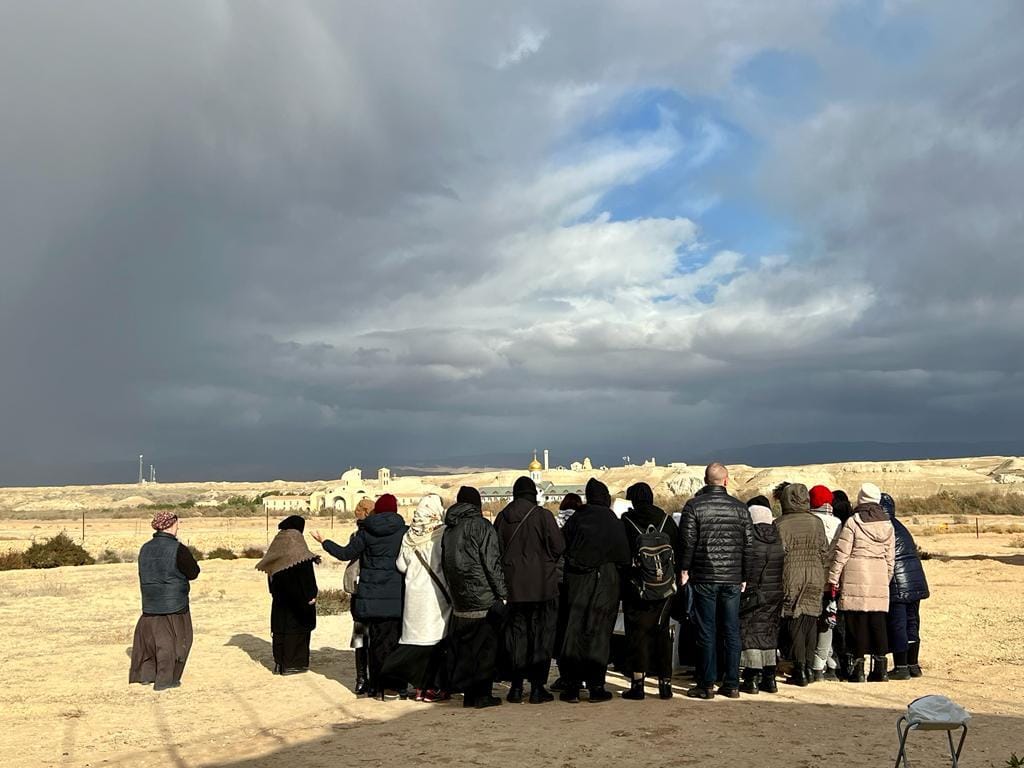
Every priest should take care to bless a sufficient quantity of water for his church, so that it will be on hand for the course of the whole year for every need and to be given out to those who ask for it; and parishioners should provide for themselves at Theophany with Holy Water for the whole year and even so that it can be kept for future years.
St. John of Shanghai
Photos: Miracle on Theophany, Holy Land, 2022
St. Ephraim of Katounakia on the Humble Simplicity of the Cave of Bethlehem
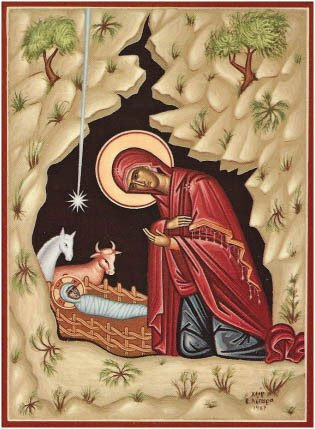
"I remember," said St. Ephraim of Katounakia, "that I was astonished by everywhere in the Holy Lands, but when I went to the Cave of Bethlehem, there, my heart was broken! It was torn into a thousand pieces! And I said, 'how was God born in this place, in this cave, without any consolation, like one thrown out of the city? This God Who could make anything for Himself, but, without complaint, far from every worldly comfort, during the night (and the coldest night of the year), the longest night of the year, in a totally abandoned place, He Who created everything--Heaven and Earth--He was born in this place!
"And when I returned [to his cell on Mount Athos], I entered in and saw my blankets (what blankets did He have?), and I saw what I had, and I was ashamed, and said: 'If God was born in that cave, how could I need all of these things?' I saw pots and pans..."
Metropolitan Athanasios of Lemesou, who was relating the story, comments that: "If I were to describe his pots...not even our dogs would eat from them! And if I could describe his bed...not even our pigs would we put in them!
"But, he perceived his place to be a luxury, over the top. And from then on, when they would tell him: "Elder, your cell is small." He would reply: "God was born in a cave. If I thought of God's cave, well then, what could I say regarding my own?"
Source: www.full-of-grace-and-truth.blogspot.com
The Holy King Milutin
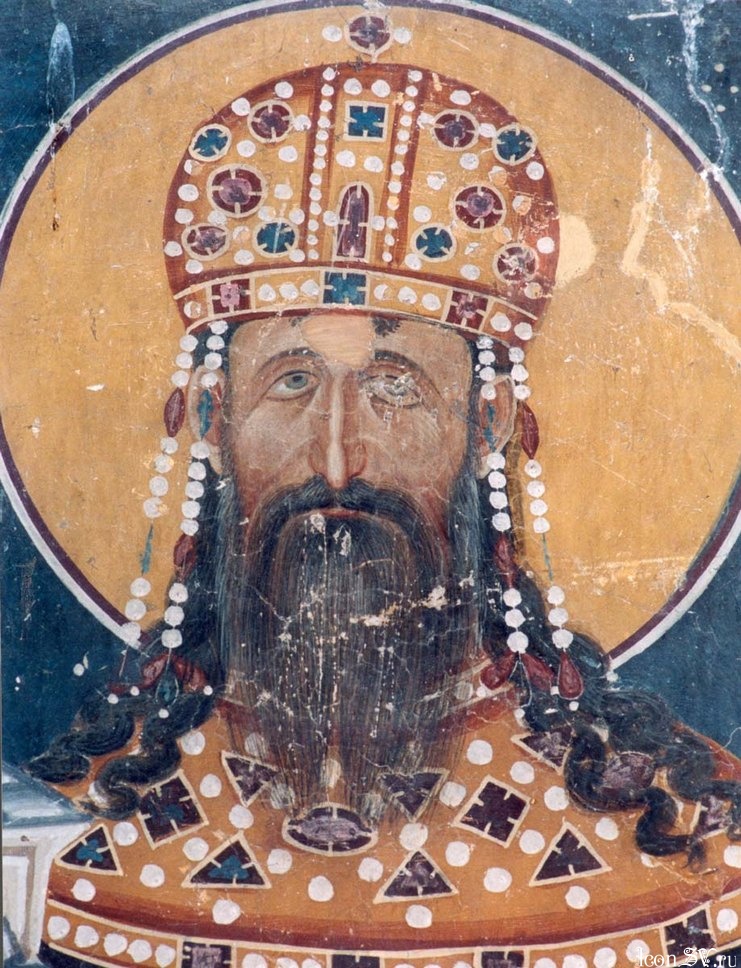
A great son of the Orthodox Church, King Milutin saved the Balkans from Uniatism. At that time in history when the Byzantine emperor's conscience was weakened, this noble and God-bearing Slavic king rose up decisively and, with God's help, saved Orthodoxy and not only in his own land, but also in all the lands of the Balkans. Everyone who closely examines the life of the holy King Milutin will understand why God gave him success after success in all his works throughout his life. When Milutin ascended the throne, he immediately vowed to God that he would build a church for each year that he would reign. He reigned forty-two years and built forty-two churches. Next to some of the churches-for example, in Thessalonica and Constantinople-he also built hospitals for the indigent, where the poor would receive everything free of charge. Beyond that, he especially loved to give alms to the needy from his own enormous wealth. Oftentimes, this powerful and wealthy king dressed in the clothes of a poor man and, with two or three of his servants, walked among the people at night and asked about their misfortunes, and gave to them abundantly. He lived a very simple, familial life, even in the midst of his great wealth-though he never seemed that way to foreigners. He had become accustomed to a simple life while still at the home of his father, King Uro I. It is told how Emperor Michael Palaeologus sent his daughter Anna with a retinue to the court of King Uro , as an offering to Milutin, in order to lure the Serbian king into union with Rome. But King Uro , seeing the foolish extravagance of the princess and her retinue, said: ``What is this, and what is it for? We are not used to such a life.'' And pointing to a Serbian princess with a distaff in her hand, he said: ``Behold, this is the kind of clothing we expect our daughter-in-law to wear.''
The Prologue from Ohrid: Lives of Saints by St. Nikolai Velimirovich
The covenant which the Serb people made with God
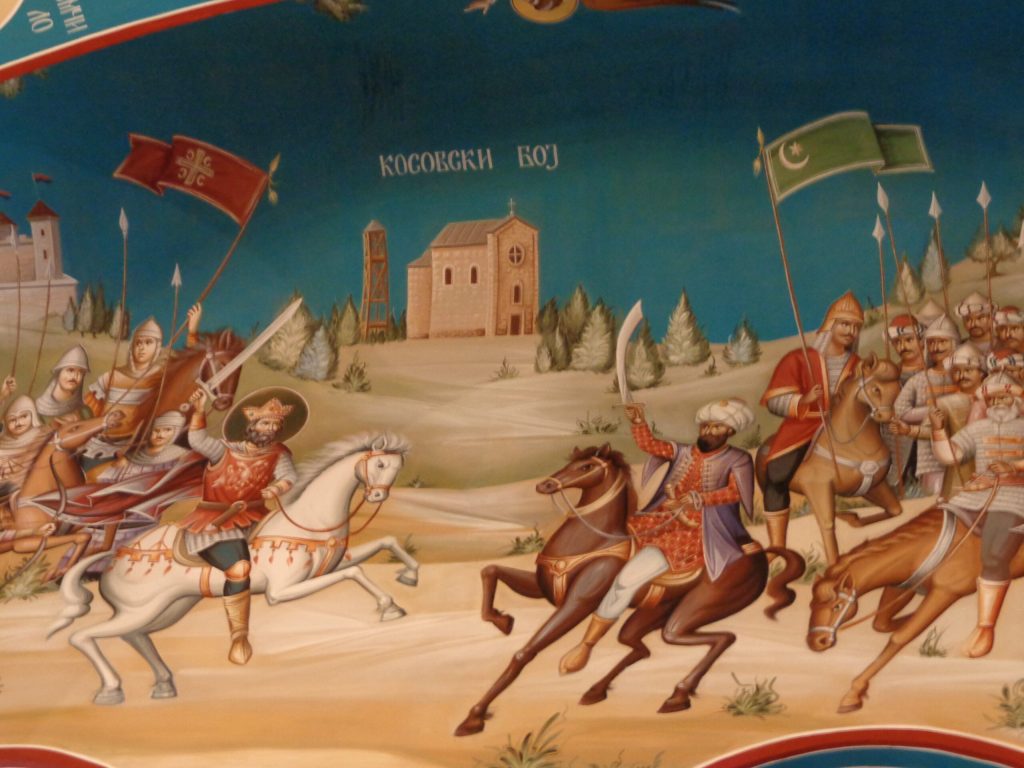
Fr Justin (Popovic) of Chelije writes:
Holy martyr king Lazar Saint Sava’s ideal and plan for his whole nation was: ‘Give up everything for Christ, but Christ for nothing.’ No one has ever realized this ideal and plan to such a full extent as the holy and great martyr, Tsar Lazar. He brought it about for his whole nation when he decided in favor of the Heavenly Kingdom and offered up himself as a sacrifice on the field of Kosovo, together with the whole Serbian people. He did this from the purely evangelic reasons recorded in our folk epic:
‘The earthly kingdom lasts only for a brief time,
But the heavenly kingdom always and forever.’
“We die with Christ, to live forever”, he told his soldiers. That Kosovo’s declaration and testament is regarded as the covenant which the Serb people made with God – and sealed with martyrs’ blood. Since then all Serbs faithful to that Testament regard themselves as the people of God, Christ’s New Testament nation, heavenly Serbia, part of God’s New Israel.
Source: "The Mystery and the Meaning of the Battle of Kosovo"
The Ascension of the Lord
Ascension. Saint Paul expresses the power of the Lord’s Ascension in this manner:When he ascended up on high, he led captivity captive, and gave gifts unto men (Eph. 4:8). Having satisfied God’s righteousness, the Lord opened for us all the treasures of God’s goodness. This is indeed a capturing or taking of spoils after victory. The beginning of the distribution of these spoils to people is the descent of the Holy Spirit, Who, having descended, always abides in the Church and gives everyone what he needs, receiving all from that captive captivity (cf. Eph 4:8).
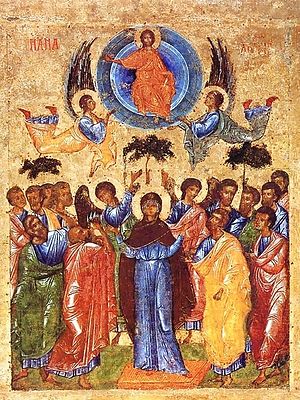 Come everyone and take. But prepare for yourself guardian of that treasure, which is a pure heart; have hands to take it, which is unreflecting faith. Then step forth searching hopefully, and praying relentlessly.
Come everyone and take. But prepare for yourself guardian of that treasure, which is a pure heart; have hands to take it, which is unreflecting faith. Then step forth searching hopefully, and praying relentlessly.
By St. Theophan the Recluse, “Thoughts for Each Day of the Year”
The Holy Great Martyr Marina
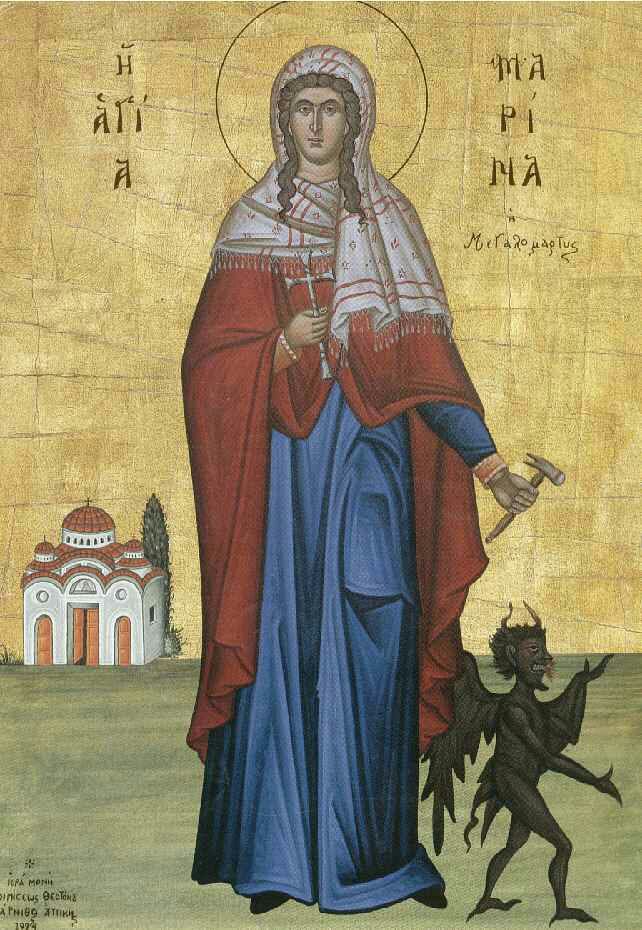 The Holy Great Martyr Marina was born in Asia Minor, in the city of Antioch of Pisidia (southern Asia Minor), into the family of a pagan priest. In infancy she lost her mother, and her father gave her into the care of a nursemaid, who raised Marina in the Orthodox Faith. Upon learning that his daughter had become a Christian, the father angrily disowned her. During the time of the persecution against Christians under the emperor Diocletian (284-305), when she was fifteen years old, Saint Marina was arrested and locked up in prison. With firm trust in the will of God and His help, the young prisoner prepared for her impending fate.
The Holy Great Martyr Marina was born in Asia Minor, in the city of Antioch of Pisidia (southern Asia Minor), into the family of a pagan priest. In infancy she lost her mother, and her father gave her into the care of a nursemaid, who raised Marina in the Orthodox Faith. Upon learning that his daughter had become a Christian, the father angrily disowned her. During the time of the persecution against Christians under the emperor Diocletian (284-305), when she was fifteen years old, Saint Marina was arrested and locked up in prison. With firm trust in the will of God and His help, the young prisoner prepared for her impending fate.
The governor Olymbrios, charmed with the beautiful girl, tried to persuade her to renounce the Christian Faith and become his wife. But the saint, unswayed, refused his offers. The vexed governor gave the holy martyr over to torture. Having beaten her fiercely, they fastened the saint with nails to a board and tore at her body with tridents. The governor himself, unable to bear the horror of these tortures, hid his face in his hands. But the holy martyr remained unyielding. Thrown for the night into prison, she was granted heavenly aid and healed of her wounds. They stripped her and tied her to a tree, then burned the martyr with fire. Barely alive, the martyr prayed: “Lord, You have granted me to go through fire for Your Name, grant me also to go through the water of holy Baptism.”
Hearing the word “water”, the governor gave orders to drown the saint in a large cauldron. The martyr besought the Lord that this manner of execution should become for her holy Baptism. When they plunged her into the water, there suddenly shone a light, and a snow-white dove came down from Heaven, bearing in its beak a golden crown. The fetters put upon Saint Marina came apart by themselves. The martyr stood up in the fount of Baptism glorifying the Holy Trinity, Father, Son, and Holy Spirit. Saint Marina emerged from the fount completely healed, without any trace of burns. Amazed at this miracle, the people glorified the True God, and many came to believe. This brought the governor into a rage, and he gave orders to kill anyone who might confess the Name of Christ. 15,000 Christians perished there, and the holy Martyr Marina was beheaded. The sufferings of the Great Martyr Marina were described by an eyewitness of the event, named Theotimos.
Up until the taking of Constantinople by Western crusaders in the year 1204, the relics of the Great Martyr Marina were in the Panteponteia monastery. According to other sources, they were located in Antioch until the year 908 and from there transferred to Italy. Now they are in Athens, in a church dedicated to the holy Virgin Martyr. Her venerable hand was transferred to Mount Athos, to the Batopedi monastery.
The descent of the Holy Spirit - Pentecost
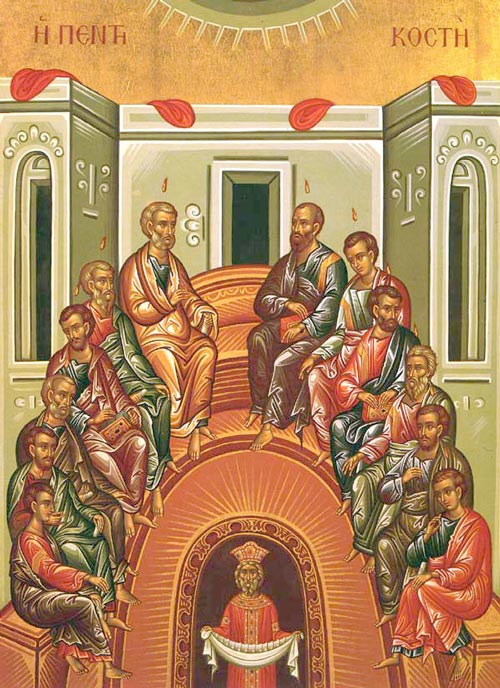
The economy of our salvation is accomplished! The operation of the Most Holy Trinity have now come into effect to accomplish it. What God the Father has willed, the Son of God fulfilled in Himself, and the Holy Spirit has now descended in order to impart it to the faithful. For our salvation is according to the foreknowledge of God the Father, through sanctification of the Spirit, unto obedience and sprinkling of the Blood of Jesus Christ (I Pet. 1:2). For this sake we are baptized in the name of the Father, and of the Son, and of the Holy Spirit, obliged, to observe all things whatsoever I have commanded you (Matt. 28:19–20). Those who do not confess the Most Holy Trinity cannot participate in the saving action of Its Hypostases and thus receive salvation. Glory to the Father and to the Son and to the Holy Spirit, the Trinity one in essence and undivided, granting us confession of Itself! “O Father Almighty, and Word, and Spirit, one nature united in three Hypostases, transcendent and extremely divine! Into Thee have we been baptized, and Thee shall we bless throughout all ages.”
„Thoughts for Each Day of the Year“ by St. Theophan the Recluse
The Assembly of the Holy and All-praised Apostles

The Synaxis of the Glorious and All-Praiseworthy Twelve Apostles of Christ appears to be an ancient Feast. The Church honors each of the Twelve Apostles on separate dates during the year, and has established a general commemoration for all of them on the day after the commemoration of the Glorious and First-Ranked among the Apostles Peter and Paul. All Apostoles, with the exception of St. John The Theologian, were martyred. The Church unites them in a common celebration
The Sven Caves Icon of the Mother of God
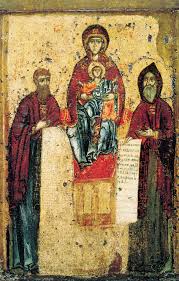
The Sven Caves Icon of the Mother of God was painted by Saint Alypius. On the icon the Mother of God is depicted sitting upon a throne, and with the Divine Infant on Her knees. Saint Theodosius is on the right side of the throne, and Saint Anthony of the Caves on the left. Until the year 1288 it was in the Kiev Caves monastery, where it was glorified by miracles. In 1288 it was transferred to the Briansk-Svensk monastery, which is dedicated to the Dormition of the Most Holy Theotokos.
Prince Roman of Chernigov, then at Briansk, became blind. Hearing about the miracles worked by the icon of Saint Alypius, the prince sent a courier to the monastery requesting that the icon be sent to him at Briansk. They sent a priest with the icon along the River Desna. After the voyage the boat landed on the right bank of the River Svena. After lodging for the night they went to the boat to pray before the icon, but they did not find it there. They saw it on a hill on the opposite bank, resting in the branches of an oak tree. News of this reached Prince Roman, and they led him to the icon on foot.
The prince prayed fervently before the icon and vowed to build a monastery on that spot, donating all the land which could be seen from the hill. After the prayer the prince regained his sight. First he saw the footpath, then nearby objects, and finally all the surroundings.
After making a shrine for the icon, the prince had a Molieben served, and then they laid the foundations for a wooden church in honor of the Dormition of the Most Holy Theotokos. The tree on which the icon rested was cut up and used as wood for other icons. The icon was glorified by healings of the blind and of the possessed, and has long been regarded as a protector from enemies.
What is most important on the holy day of Pascha
 What is most important on the holy day of Pascha is our Communion with the Risen Christ, which is principally manifest in the reception of the Holy Mysteries at the holy service, and for which we repeatedly pray in the services of Great Lent.
What is most important on the holy day of Pascha is our Communion with the Risen Christ, which is principally manifest in the reception of the Holy Mysteries at the holy service, and for which we repeatedly pray in the services of Great Lent.
Leaving the Paschal service before the end of Liturgy is a sin — or the result of a lack of understanding of the Church service.
If one is compelled to do so by unavoidable necessity, then an egg, which is merely a symbol of resurrection, cannot take the place of actually partaking of the Resurrection in the Divine Liturgy, and the distribution of eggs before the Liturgy would be an act of disdain for the Divine Mystery and a deception of the faithful.
The Church canons strictly forbid bringing to the altar anything besides the bread and wine which are to be transformed into the Body and Blood of Christ, likewise oil for the lamps and incense. A cleric who violates this canon is deposed according to the third rule of the Apostolic Canons.
I call up all to fully participate in the Divine banquet of the Risen Christ — the Holy Liturgy, and then, at its conclusion, to announce the good news of Christ’s Resurrection and greet one another with this symbol of the Resurrection.
St. John the Wonderworker
Great Lent Schedule 2017
Attached is the schedule of upcoming Evening Services that will be served by all Orthodox clergy in Calgary. Please join us in those prayers.
Venerable Simeon the Myrrhgusher
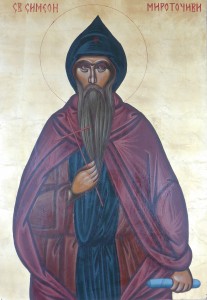 Saint Simeon the Myrrh-Gusher, King of Serbia Stephen Nemanya was the Great Zhupan of Serbia, and lived during the twelfth century. The saint toiled much for his fatherland: he united a large portion of the Serbian lands, and strove for the political independence of his country from the Byzantine Empire. In his zeal for the Orthodox Church, he defended his nation against heresy and false teaching.
Saint Simeon the Myrrh-Gusher, King of Serbia Stephen Nemanya was the Great Zhupan of Serbia, and lived during the twelfth century. The saint toiled much for his fatherland: he united a large portion of the Serbian lands, and strove for the political independence of his country from the Byzantine Empire. In his zeal for the Orthodox Church, he defended his nation against heresy and false teaching.
At the age of eighty, Stephen went to Mt. Athos, where his son Saint Sava (January 12), was glorified by the holiness of his life. Together they restored the desolate Hilandar monastery, to which monks from various lands began to gather.
Saint Simeon was a great ascetic and wise guide for the monks. He died on February 13, 1200, and his relics began to exude myrrh. Saint Sava transported his father’s relics back to Serbia, and placed them in a church of the Most Holy Theotokos at the River Studenitsa. Saint Simeon had richly adorned this church while he was still ruler of Serbia.
The Meeting of the Lord
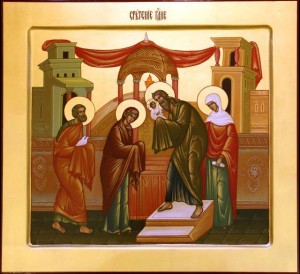 At this Meeting the Lord is surrounded on the one side by Simeon — righteousness which awaits salvation, but not of itself, and Anna — a life of strict fasting and prayer, made alive by faith; and on the other side by essential, comprehensive and steadfast purity — the Virgin Mother of God, and by humble, silent submission and devotion to the will of God — Joseph the Betrothed.
At this Meeting the Lord is surrounded on the one side by Simeon — righteousness which awaits salvation, but not of itself, and Anna — a life of strict fasting and prayer, made alive by faith; and on the other side by essential, comprehensive and steadfast purity — the Virgin Mother of God, and by humble, silent submission and devotion to the will of God — Joseph the Betrothed.
Transfer all of these spiritual attitudes to your heart and you will meet the Lord; not carried to you, but coming to you Himself. You will take Him into the embrace of your heart, and you will sing a hymn which will pass throughout the heavens and gladden all the angels and saints.
Saint Theophan the Recluse
Elevation of the Honorable and Life-giving Cross
Two events in connection with the Honorable Cross of Christ are commemorated on this day: first, the finding of the Honorable Cross on Golgotha and second, the return of the Honorable Cross from Persia to Jerusalem. Visiting the Holy Land, the holy Empress Helena decided to find the Honorable Cross of Christ. An old Jewish man named Judah was 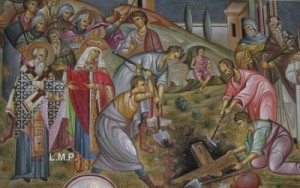 the only one who knew where the Cross was located, and, constrained by the empress, he revealed that the Cross was buried under the temple of Venus that Emperor Hadrian had built on Golgotha. The empress ordered that this idolatrous temple be razed and, having dug deep below it, found three crosses. While the empress pondered on how to recognize which of these was the Cross of Christ, a funeral procession passed by. Patriarch Macarius told them to place the crosses, one by one, on the dead man. When they placed the first and second cross on the dead ma
the only one who knew where the Cross was located, and, constrained by the empress, he revealed that the Cross was buried under the temple of Venus that Emperor Hadrian had built on Golgotha. The empress ordered that this idolatrous temple be razed and, having dug deep below it, found three crosses. While the empress pondered on how to recognize which of these was the Cross of Christ, a funeral procession passed by. Patriarch Macarius told them to place the crosses, one by one, on the dead man. When they placed the first and second cross on the dead ma
n, the dead man lay unchanged. When they placed the third cross on him, the dead man came back to life. By this they knew that this was the Precious and Life-giving Cross of Christ. They then placed the Cross on a sick woman, and she became well. The patriarch elevated the Cross for all the people to see, and the people sang with tears: ``Lord, have mercy!'' Empress Helena had a silver case made and set the Honorable Cross in it. Later, the Persian Emperor Chozroes conquered Jerusalem, enslaved many people, and took the Lord's Cross to Persia. The Cross remained in Persia for fourteen years. In the year 628 the Greek Emperor Heraclius defeated Chozroes and, with much ceremony, returned the Cross to Jerusalem. As he entered the city Emperor Heraclius carried the Cross on his back, but suddenly was unable to take another step. Patriarch Zacharias saw an angel preventing the emperor from bearing the Cross on the same path that the Lord had walked barefoot and humiliated. The patriarch communicated this vision to the emperor. The emperor removed his raiment and, in ragged attire and barefoot, took up the Cross, carried it to Golgotha, and placed it in the Church of the Resurrection, to the joy and consolation of the whole Christian world.
The Prologue from Ohrid: Lives of Saints by St. Nikolai Velimirovich
The Nativity of Our Most Holy Lady the Theotokos
Your nativity, O Virgin Theotokos, has proclaimed joy to the whole universe; for from You has shone forth Christ our God, the Sun of righteousness, Who having annulled the curse, has given His blessing, and having abolished death, has granted us eternal life.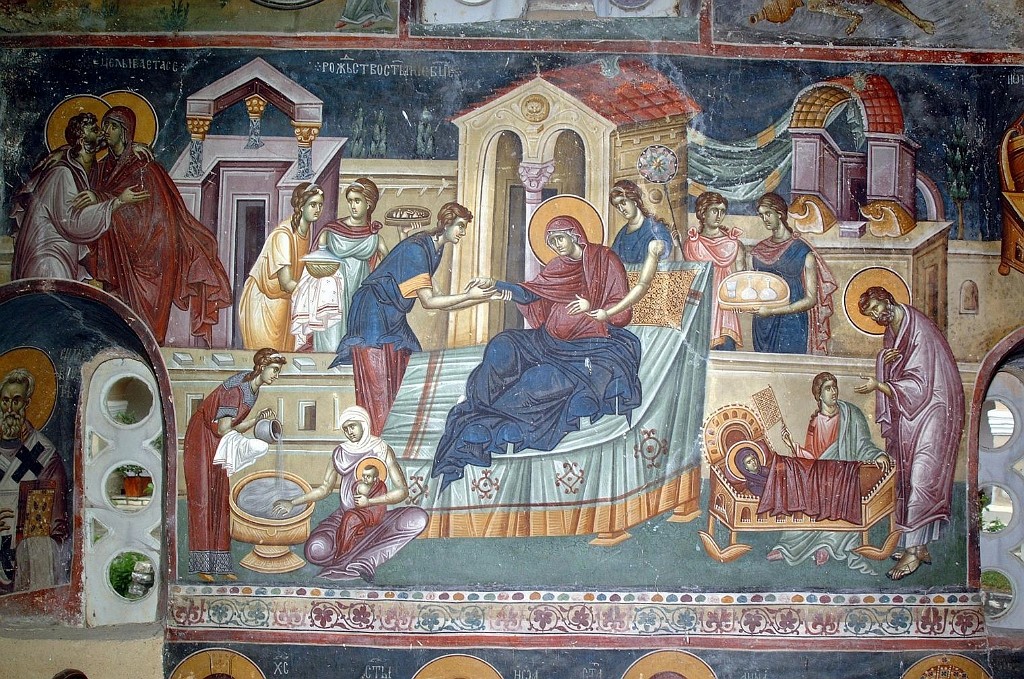
The Dormition of the Most Holy Mother of God
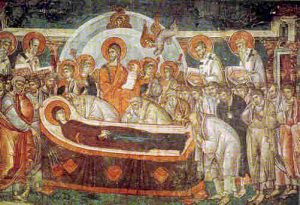
Mary has chosen that good part (Luke 10:42). The Dormition of the Mother of God represents a good end to such a choice. The Saviour Himself received her soul in His arms at her Dormition. Many saints were made worthy of the same. In various ways and degrees, all those who choose that good part meet with this. At the time this choice is made, the saints foresaw this end through hope, and even felt it to a certain degree; but then come labours, struggle and forcing oneself, shrouding the chosen path. The good end of that good part remains as a guiding star. It is as a faraway shining light for a traveller who is overtaken by darkness. Hope is the stimulator of energy and the maintainer of patience and constancy in what was begun, while hope itself is strong through faith. People make their choice according to faith, and through hope they are firm in their choice; while through patience they attain that good end.
„Thoughts for Each Day of the Year“ by St. Theophan the Recluse
The Transfiguration of our Lord and God and Saviour Jesus Christ
 On the Transfiguration a voice from heaven uttered only hear Him (Matt. 17:5). Why is this so? Because the fruit of obedience was being shown to them. It was as if the Heavenly Father were saying: Do you want to attain this? Hear what He will suggest and command you. If you go on His path, you will undoubtedly enter into the realm of light, which will embrace you not from without, but will come forth from within, and always keep you in a state in which all of your bones will utter: it is good for us to be this way. You will be filled with the light of joy, the light of good will, the light of knowledge; all sorrows will pass by, the dissonance of the passions will disappear, falsehood and delusion will disperse. On the earth you will become heavenly; from among the earthly-born, you will become Godly-born; from amidst the perishable you will become eternally blessed. Then all will be yours, because you yourselves will become Christ’s. He who loves Christ the Lord is beloved of the heavenly Father, and They come to him and make their abode with him. This is the light of the Transfiguration.
On the Transfiguration a voice from heaven uttered only hear Him (Matt. 17:5). Why is this so? Because the fruit of obedience was being shown to them. It was as if the Heavenly Father were saying: Do you want to attain this? Hear what He will suggest and command you. If you go on His path, you will undoubtedly enter into the realm of light, which will embrace you not from without, but will come forth from within, and always keep you in a state in which all of your bones will utter: it is good for us to be this way. You will be filled with the light of joy, the light of good will, the light of knowledge; all sorrows will pass by, the dissonance of the passions will disappear, falsehood and delusion will disperse. On the earth you will become heavenly; from among the earthly-born, you will become Godly-born; from amidst the perishable you will become eternally blessed. Then all will be yours, because you yourselves will become Christ’s. He who loves Christ the Lord is beloved of the heavenly Father, and They come to him and make their abode with him. This is the light of the Transfiguration.
„Thoughts for Each Day of the Year“ by St. Theophan the Recluse
Ascension

Saint Paul expresses the power of the Lord’s Ascension in this manner: When He ascended up on high, He led captivity captive, and gave gifts unto men (Eph. 4:8). Having satisfied God’s righteousness, the Lord opened for us all the treasures of God’s goodness. This is indeed a capturing or taking of spoils after victory. The beginning of the distribution of these spoils to people is the descent of the Holy Spirit, Who, having descended, always abides in the Church and gives everyone that which he needs, receiving all from that captive captivity (cf. Eph 4:8). Come everyone and take. But prepare for yourself guardian of that treasure, which is a pure heart; have hands to take it, which is unreflecting faith. Then step forth searching hopefully, and praying relentlessly.
„Thoughts for Each Day of the Year“ by St. Theophan the Recluse

